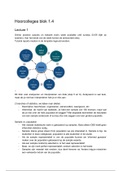Summary
Aantekeningen Hoorcolleges blok 1.4 Bestuurskunde Erasmus Universiteit Quantitative methods en samenvatting SPSS handleiding
- Course
- Institution
- Book
Aantekeningen hoorcolleges blok 1.4 Bestuurskunde Erasmus Universiteit vak Quantitative methods en samenvatting SPSS. Tentamencijfer: 8.5
[Show more]




